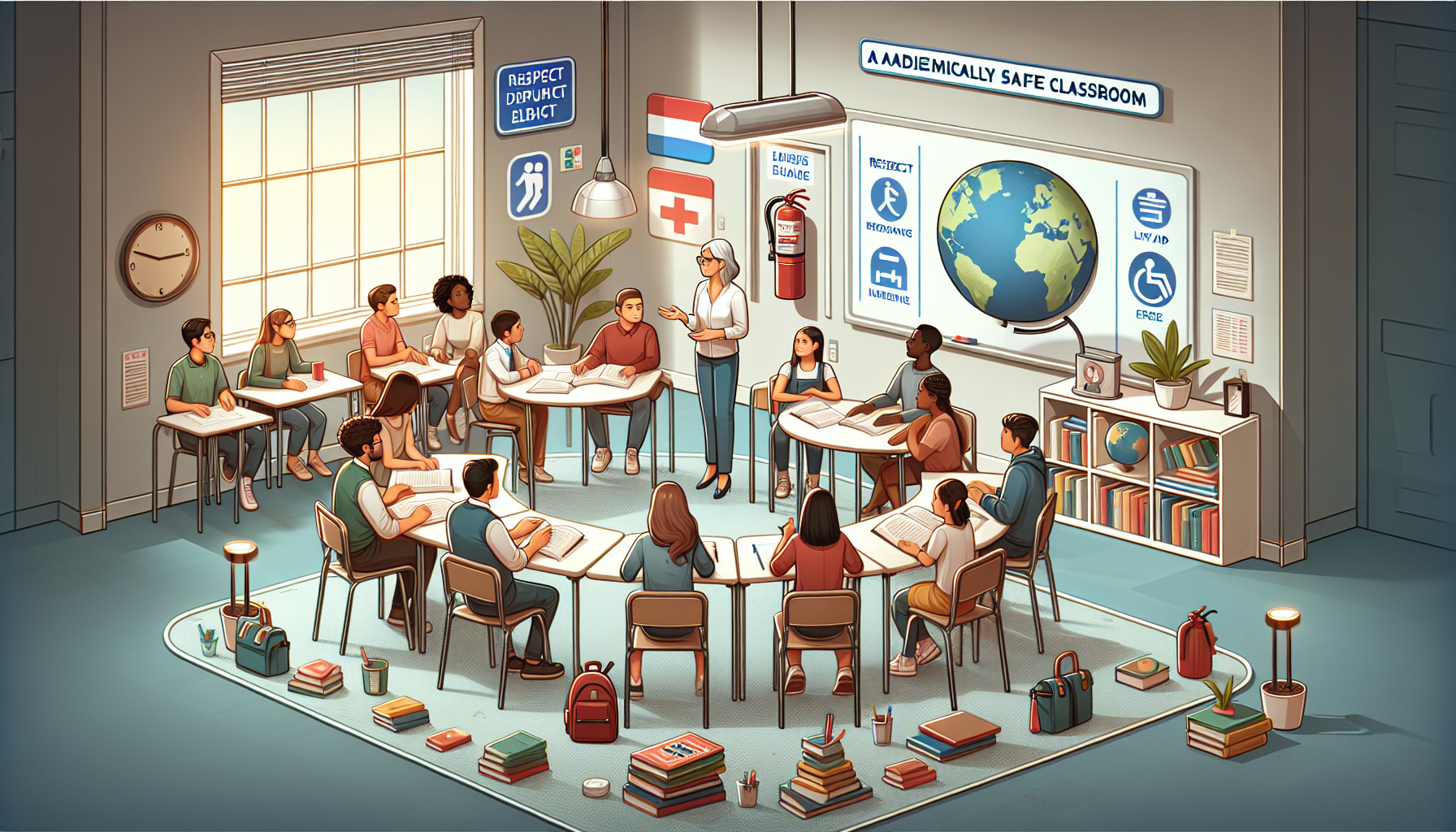Nurturing a Positive Academic Environment
In the quest for promoting excellence in education, one often overlooked aspect is the emotional and intellectual safety of the learning space. This extends far beyond the physical safety measures that are commonly discussed, delving into the psychological well-being of both students and educators. The significance of fostering a secure academic realm cannot be understated, as it serves as the foundation upon which learners can build confidence, express creativity, and ultimately unveil their true potential.
Characteristics of a Supportive Educational Setting
A supportive educational ecosystem is predicated on various cornerstones. These essentials not only establish a fertile ground for intellectual growth but also encourage positive interpersonal relationships and self-discovery. Let’s delve into what makes an educational space truly accommodating for learners:
Open Communication Paths
Encouraging learners to voice their opinions without the fear of ridicule or retribution is paramount. This level of open communication is a key driver for a classroom’s productive atmosphere, fostering a sense of belonging and mutual respect among peers and faculty. When students feel heard, they are more inclined to contribute meaningfully to discussions and collaborative efforts.
Emphasizing Respect and Inclusivity
Every participant in the educational process must feel valued and acknowledged. This means embracing diverse backgrounds, learning styles, and perspectives. An environment that prides itself on respect and inclusivity not only adheres to the ethical standards of education but also prepares students for the broad spectrum of the global community.
Constructive Feedback Over Criticism
Feedback is a powerful tool that, when used constructively, can guide students toward self-improvement and a deeper understanding of subject matter. This is in stark contrast to criticism that can deflate morale and hamper the willingness to take intellectual risks. Constructive feedback is, therefore, a critical element in maintaining a safe learning atmosphere.
The Role of the Educator in Promoting a Safe Learning Space
Educators hold a privileged position in shaping the dynamics of the classroom. Their role is multifaceted; ranging from being knowledge facilitators to emotional anchors for students as they navigate their academic pursuits:
- Modeling Desired Behavior: Educators must exemplify the behavior they wish to instill in their students. This includes showing empathy, practicing patience, and setting clear, consistent expectations.
- Promoting a Growth Mindset: Teachers should encourage students to view challenges as opportunities to grow, thereby creating a culture of resilience and perseverance.
- Creating an Environment of Trust: This involves allowing vulnerability, both in students and themselves, and honoring that vulnerability with support and confidentiality.
The Impact of Emotional Well-being on Academic Success
The correlation between emotional well-being and academic achievement is one that is gaining momentum in educational discourse. A classroom that is academically safe is one in which the emotional needs of students are not only recognized but actively attended to. Stress, anxiety, and other emotional struggles can place significant barriers in the path of learning. Therefore, addressing these issues is critical for students to perform at their best.
Implementing Support Systems
Constructing a safety net for students involves creating systems that encourage them to share their struggles without stigma. This may involve:
- Counseling services
- Peer support groups
- Mentorship programs
Integrating Emotional Intelligence in Curriculum
The inclusion of emotional intelligence training in the curriculum serves to equip students with the skills necessary to manage their emotions effectively. These skills are integral not only in academic settings but carry over into every aspect of a person’s life, thereby empowering them to build healthier relationships and navigate challenges more adeptly.
Challenges and Solutions in Maintaining Academic Safety
While the path toward ensuring an academically nurturing space is clear in theory, in practice, there are hurdles that must be surmounted:
Resource Constraints
Many educational institutions may face limitations in resources which can hamper efforts to create these environments. Solutions to this challenge might include seeking alternative funding through grants, community partnerships, or utilizing digital platforms to facilitate peer connections and support networks.
Changing Cultural Norms
The traditional view of education often focuses solely on academic performance and rankings. Shifting this perspective to encompass the broader aspects of academic safety requires cultural changes within institutions. This transformation can begin with workshops, professional development, and an ongoing dialogue about the importance of emotional wellness in academic settings.
Measuring Impact
Lastly, measuring the impact of policies and initiatives aimed at creating academically safe environments can be nuanced. However, improved student engagement, increased attendance rates, and feedback from the school community can serve as indicators of success.
Conclusion
In conclusion, constructing a psychologically sound and nurturing academic environment is a complex yet vital endeavor. The responsibility lies with all stakeholders—educators, students, administrators, and the community at large. By prioritizing the creation of such spaces, we pave the way for not only academic successes but also for fostering well-rounded individuals who are equipped to thrive in their personal and professional lives. The journey toward a truly supportive educational environment is ongoing, but with dedication and collaboration, it is certainly attainable.
